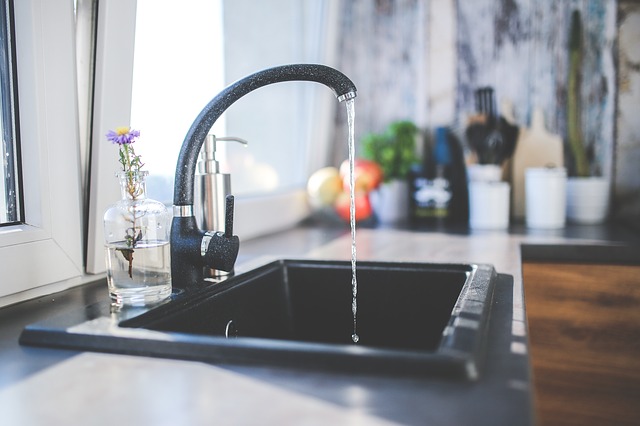Environmental Quality Standards

The Environmental Agency, as the nominated competent authority, uses a variety of standards and targets to help protect and improve water quality. The standards aim at controlling the risks to the quality of water abstracted from the sea for supply to our homes. Most of the standards support the requirements of European Directives.
The World Health Organization (WHO) sets international standards for drinking water. A broad classification of drinking water safety worldwide can be found here. Gibraltar has a water classification of five blue water droplets which is the top classification. Only 20% of countries have achieved this classification.
In Gibraltar, all of our drinking water (potable water), is obtained by the desalination of seawater by the process of reverse osmosis. Our potable water supply network delivers a single quality of water, whether it is to be used for drinking or washing, domestic or commercial for example. In Gibraltar, public drinking water is controlled by the Public Health (Potable Water) Regulations 1994, and the Public Health Act. These statutes transpose European Council Directive 98/83/EC on the quality of water intended for human consumption.
Monitoring of Potable Water
To make sure drinking water everywhere in the EU is indeed healthy, clean and tasty, the Directive sets standards for the most common substances (so-called parameters) that can be found in drinking water. A total of around 48 microbiological and chemical parameters must be monitored and tested regularly. In principle WHO guidelines for drinking water are used as a basis for the standards in the Drinking Water Directive. The Directive also stipulates the minimum number of samples and the type of monitoring to be conducted. There are basically two types of monitoring, Check Monitoring and Audit Monitoring.
1) Check Monitoring:
This type is used to regularly provide information on the organoleptic and microbiological quality of the drinking water supplied as well as the effectiveness of the drinking water treatment. The following parameters are the subject of the Check Monitoring in Gibraltar:
- Odour
- Taste
- Colour
- Turbidity
- pH
- Conductivity
- Ammonia Nitrogen
- Hardness as CaCO3
- Total Chloride
- Free Chlorine
- Combined residual
- Total Coliforms
- Escherichia coli
- Enterococci
- Clostridium perfringens
- Colony count at 22°C
2) Audit Monitoring:
This type of sample is conducted less frequently and is used to provide the information necessary to determine if all the parameters which are applicable to Gibraltar are being complied with. It includes a long list of parameters ranging from chemical contaminants such as heavy metals and pesticides to bacteriological indicators.
You can find the Latest Water Analysis here.
In Gibraltar, currently approximately 1.7 million metric tons of drinking water is distributed annually which averages 4655 metric tons daily. The frequency of the Check and Audit monitoring required is dependent on this daily distribution figure. From the table below, Gibraltar is required to carry out a total of 16 Check monitoring and 3 Audit monitoring. The Environmental Agency more than double this figure when it comes to Check monitoring samples as well as 4 Audit samples annually, thus going well over the required numbers. Aquagib Ltd also carries out a large number of samples as part of their routine operational checks on the quality of the water they distribute.
Table: Minimum frequency of sampling and analyses for water intended for human consumption supplied from a distribution network. (Table B1 Schedule 2 Public Health (Potable Water) Rules 1994).
| Volume of water distributed or produced each day within a supply zone (Notes 1 and 2) m3 | Check monitoring number of samples per year(Notes 3, 4 and 5) | Audit monitoring number of samples per year(Notes 3 and 5) |
| = 100 | (Note 6) | (Note 6) |
| >100 = 1000 | 4 | 1 |
| >1000 = 10 000 | 4 + 3 for each 1 000 m3/d and part thereof of the total volume | +1 for each 3 300 m3/d and part thereof of the total volume |
| >10 000 = 100 000 | 3 + 1 for each 10 000 m3/d and part thereof of the total volume | |
| >100 000 | 10 + 1 for each 25 000 m3/d and part thereof of the total volume |
Notes
1) A supply zone is a geographically defined area within which water intended for human consumption comes from one or more sources and within which water quality may be considered as being approximately uniform.
2) The volumes are calculated as averages taken over a calendar year. A Member State may use the number of inhabitants in a supply zone instead of the volume of water to determine the minimum frequency, assuming a water consumption of 200 litres/day/capita.
3) In the event of intermittent short-term supply the monitoring frequency of water distributed by tankers is to be decided by the Member State concerned.
4) For the different parameters in Annex I, a Member State may reduce the number of samples specified in the table if:a. the values of the results obtained from samples taken during a period of at least two successive years are constant and significantly better than the limits laid down in Annex I, andb. no factor is likely to cause a deterioration of the quality of the water.c. The lowest frequency applied must not be less than 50% of the number of samples specified in the table except in the particular case of note 6.
5) As far as possible, the number of samples should be distributed equally in time and location.
6) The frequency is to be decided by the Member State concerned.


